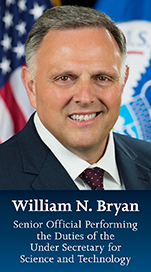Our nation’s first responders face harrowing emergencies while saving lives and protecting our communities. While the DHS Science and Technology Directorate (S&T) creates innovative technologies that support their mission, we recognize that stand-alone devices may not be useful if they don’t work with existing systems, so we’re helping responders get integrated cutting-edge solutions that can increase their safety and effectiveness.
 S&T collaborated with first responders and industry partners to create the Next Generation First Responder Integration Handbook, a guide for industry and public safety agencies that outlines a “plug-and-play,” standards-based environment that enables commercially developed technologies to integrate with existing first responder infrastructure. This information will make it easier for industry to understand how they can build and adapt technology so it can easily be put into use, which helps responders quickly get the resources they need while trusting that they’ll work as intended.
S&T collaborated with first responders and industry partners to create the Next Generation First Responder Integration Handbook, a guide for industry and public safety agencies that outlines a “plug-and-play,” standards-based environment that enables commercially developed technologies to integrate with existing first responder infrastructure. This information will make it easier for industry to understand how they can build and adapt technology so it can easily be put into use, which helps responders quickly get the resources they need while trusting that they’ll work as intended.
The NGFR Integration Handbook is divided into three parts:
Part one is an overview of the NGFR on-body framework and the concepts behind its modular design. It identifies the function of each of the basic modules and how they interact with agency systems. Part two targets engineers at a high level. It details the engineering design for module-to-module communications and data transfer from on-body systems to agency systems, including the interfaces, services and standards. Finally, part three targets software developers and engineers to guide their modular development.
This handbook is an evolving resource, and I invite industry to help S&T rewrite the rules on public safety technology integration. We need to ensure our responders have tools that work seamlessly so they can achieve their mission. Feedback from industry, public safety agencies and first responders ensures that specifications outlined in the handbook will open the first responder technology market to new industry players, drive down costs for agencies and provide responders with the capabilities they need to fulfill their duties.
For industry interested in entering the first responder technology market and for public safety agencies who seek to keep their first responders better protected, connected and fully aware, email NGFR@hq.dhs.gov to receive guidance on how to provide feedback on the handbook. Our comment and feedback period ends Monday, April 30 for inclusion in the next version scheduled for publication in late June.
We also ask for you to join us for our DHS S&T NGFR Integration Handbook Facebook Tech Talk on Tuesday, April 10 at 1:00 p.m. ET, where our staff will outline details of the handbook and answer your questions. We look forward to engaging with you
